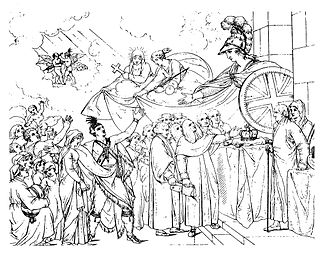파라과이의 아나키즘
Anarchism in Paraguay| 다음에 대한 시리즈 일부 |
| 아나키즘 |
|---|
 |
파라과이의 무정부주의는 19세기 말부터 도시와 농촌 노동계급 사이에서 영향력을 행사해 왔다. 주요 인물은 작가 겸 기자 라파엘 배렛이었다.[1][2]
시작
무정부주의자들은 1889년부터 그래픽, 철도, 제빵업 조합에서 활동하면서 하루 8시간 근무에 대한 투쟁을 조직했다. 그 해 3월 1일, 철도 노동자들은 상당한 규모의 파업을 선언했고, 곧 다른 길드들도 뒤따랐다. 1892년 5월 21일, "로스 히조스 델 차코"라는 단체에 의해 편집된 최초의 자유주의 선언문이 출판되었다. 그들은 스스로를 무정부 공산주의자라고 선언했고 사유재산, 성직자, 국가, 군대를 폐지할 작정이었다. 그와 동시에 여러 자유주의 조합이 조직되었는데, 특히 목수들 사이에서는 더욱 그러했다. 1900년에 일시적으로 아르헨티나를 근거지로 하는 이탈리아의 무정부주의자 피에트로 고리는 벽돌공 조합의 법령을 초안하였다. 목수들은 일주일간의 파업 끝에 1901년에 마침내 8시간의 하루를 달성했다.[1] 이 기간 동안 스페인계 및 아르헨티나계 이민자들은 파라과이에서 무정부주의 이상을 전파하는 데 중요한 역할을 했다.[3]
20세기
파라과이 지방노동자연맹은 1906년 4월 22일 FORA의 무정부-신디칼리즘 모델로 조직되어 설립되었다. 그것은 모든 정당에 반대한다고 선언하면서, 그것의 목표로 "어소시에이트와 자유 생산자 연합"을 위한 투쟁을 제안하였다. 그것의 마우스피스는 신문 엘 데스페타르였다. 파라과이의 무정부주의자들은 특히 농민들 사이에서 영향력이 컸고, 심지어 지주들과 대결하기 위해 '무장 저항의 사회'까지 조직했다.[4]
라파엘 배렛은 이 운동의 뛰어난 인물이었다; 그의 잡지 게르미날은 "그는 파라과이 노동자의 사회적 비극을 묘사했고 농민들이 당했던 비인간적인 착취를 비난하며, 그의 시대를 위해 진보된 조사 저널리즘의 형태를 실천했다. 그의 기사에는 "초원지가 무엇인가" "아르헨티나 테러" "나의 아나키즘" "엘로쿠스" " 파라과이 고통" 등이 포함되었다. 1904년 아르헨티나에서 파라과이에 도착하여 신문 《엘 티엠포》의 특파원으로 활동하였다. 1908년 몬테비데오로 강제 추방당했고 1910년 결핵으로 사망했다.
Another renowned Paraguayan cultural figure was Ignacio Núñez Soler, a prominent Paraguayan anarchist and visual artist. In 1916 he founded, together with Leopoldo Ramos Giménez, Modesto Amarilla, Manuel Núñez and others, a working-class entity called May Day, whose social insignia was a black flag. Based on this organization, the Centro Obrero Regional del Paraguay (CORP) was later created, which organized branches in almost all the cities and towns of Paraguay and published journals such as: El Combate, Renewal, Human Protest and Prometheus.
During the first decade of the 20th century, the newspapers La Rebelión, La Tribuna and Towards the Future were published. Between 1920 and 1926, Renovation was published. The FORP and the Combate group published brochures by Rafael Barret. In 1928, the anarchists founded the Revolutionary Nationalist Alliance, whose strategy was the implantation of a "Common Republic" and the "Federalist Union of the Peoples of Latin America". On February 20, 1931, a student-worker group led by Obdulio Barthe took the city of Encarnación declaring it a "revolutionary commune", under the leadership of popular assemblies.[5][6] This was just a stage in a plan to start a libertarian socialist revolution throughout Paraguay. Anarchists that participated in this episode included Félix Cantalicio Aracuyú, Ramón Durán, Ciriaco Duarte, Juan Verdi, etc.
Anarchists also differed from other trends because they posed new problems, such as their way of life, expressed, for example, in a manifesto to Paraguayan workers: “We want love to be free and not as it happens nowadays, where beings who have never loved each other unite for life (...) we also want, since we are not born by the will of our parents, that children belong to the great human family”. The anarchists consequently continued the criticism of the religious mystification that the liberals had initiated since the 19th century and that the ruling bourgeoisie had toned down for the sake of a coexistence with the Catholic Church, which held great influence in Latin America.
— Luis Vitale[4]
21세기
파라과이에서는 차코 전쟁과 일련의 군사 독재에 의해 파라과이 사회를 장악했던 급진 우파 운동으로 인해 장기화된 다른 중남미 국가들보다 무정부주의의 부활이 훨씬 더 오래 걸렸다. 21세기 초엽에는 펑크 반문화 단체와 사회 문화 투쟁과 관련된 개인들에게 무정부주의적인 경향이 두드러지기 시작했다. 스쿼터스는 '라 테라자'와 '닌데'를, 무정부주의 사회 중심지 '엠마 차나 등의 코뮌'을 열었다. 무정부주의자들은 또한 Autonomyia Zine, Diatriba, Periférica, Grioto Fanzine, Abstruso, Kupi'i Fanzine, 그리고 The Cradation Without Permission 신문과 같은 정기 간행물을 발간했다. 최근 몇 년간의 시위와 행진에 수도의 벽에 낙서가 있고 무정부주의 깃발이 있는 것은 좌파 단체와 사회 부문과 상호작용을 시작하기 시작하는 자유주의적 경향에 대한 개인에 대한 관심이 어느 정도 깨어졌음을 보여준다.
참조
- ^ a b 카펠레티, 엔젤 & 라마, 카를로스 El anarquismo en América Latina , Edit. 아야쿠초, 카라카스 1990, pg. LXXVII.
- ^ Rafael Barrett, anarquista y revolucionario. Abc color. December 19, 2010. Retrieved July 10, 2018.
- ^ Gonzalez, Theodosius (1931). La anarquía sus causas y sus efectos. Talleres Gráficos Argentinos LJ Rosso. p. 577.
- ^ a b Vitale, Luis (1998). Contribución a una Historia del Anarquismo en América Latina. Santiago: Ed. Instituto de Investigación de Movimientos Sociales "Pedro Vuskovic". p. 14.
- ^ Vitale, Luis (1998). Contribución a una Historia del Anarquismo en América Latina. Santiago: Ed. Instituto de Investigación de Movimientos Sociales "Pedro Vuskovic". p. 13.
- ^ 카펠레티, 엔젤 & 라마, 카를로스 엘 아나키스모 엔 아메리카 라티나, 편집. 아야쿠초, 카라카스 1990, pg. LXXVIII.


